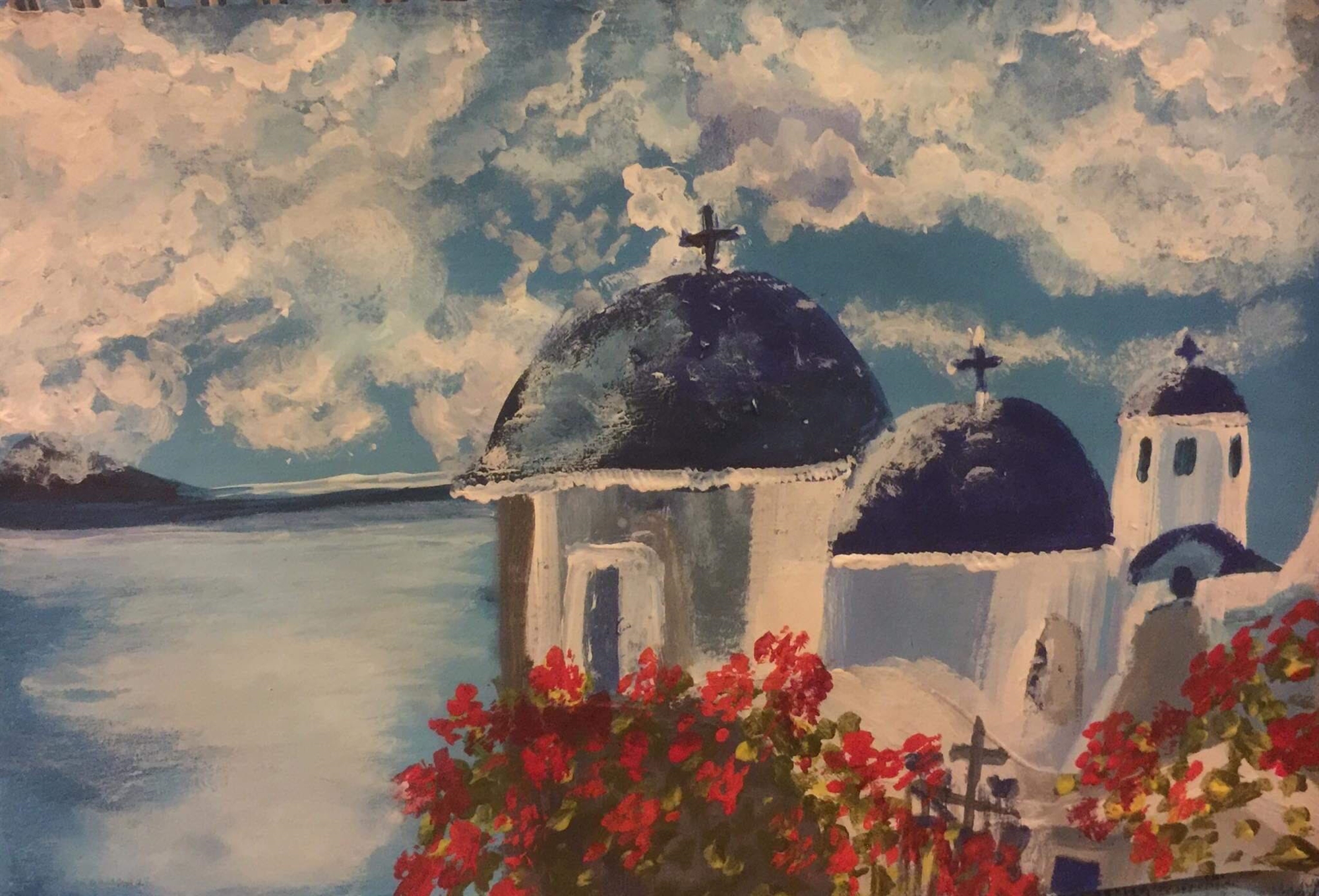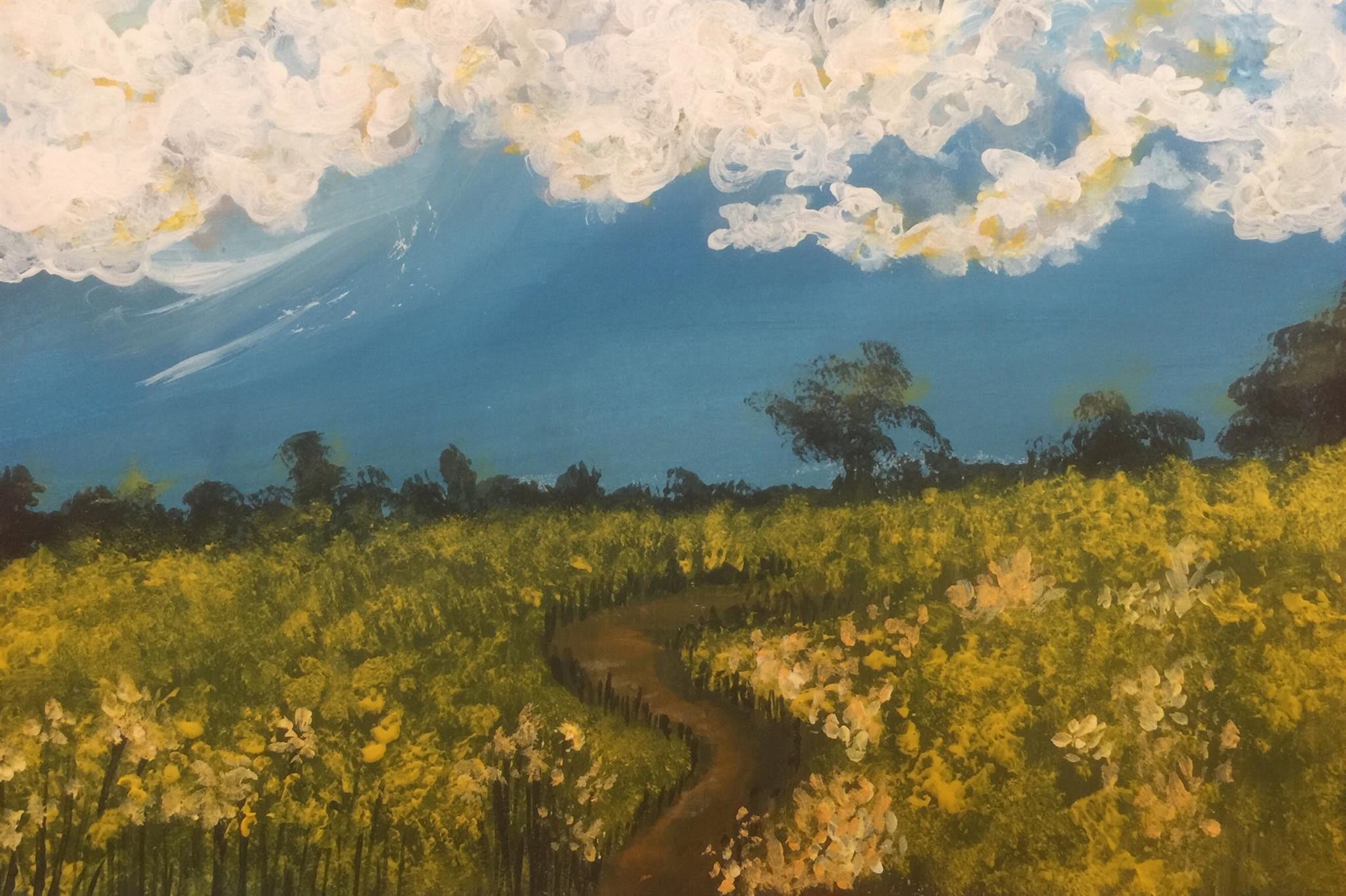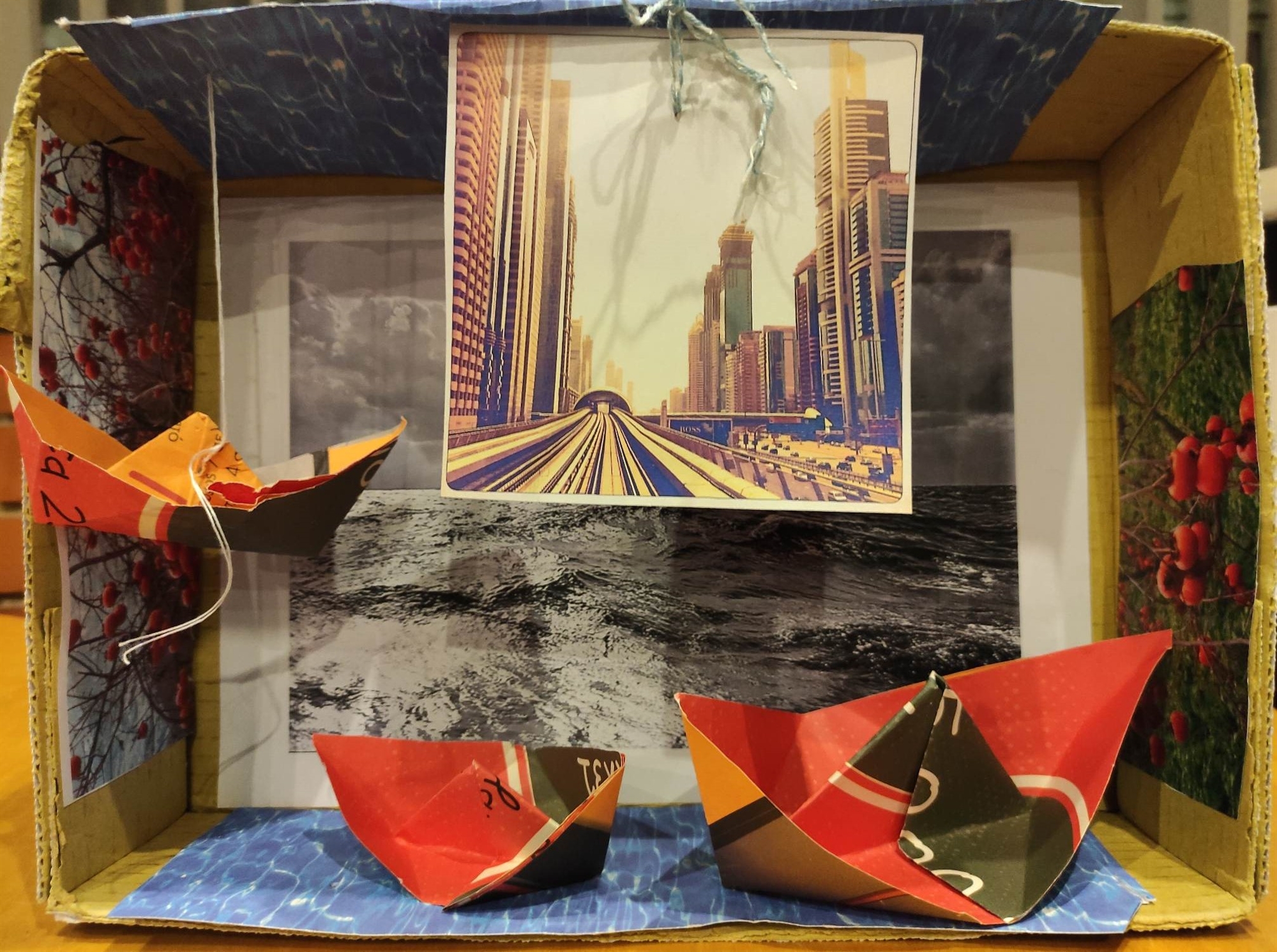
HM. he was putting the finishing touches on a newly completed project. Drops of tears flow down the face he painted, but a clear look looks with optimism and hope into the future. The creation of the visual work was the last act of a two-hour meeting at the MOMus Museum of Photography, where he could express the feelings he had while observing the work and discussing issues related to the liberation of the body. “Art always brings relief,” she said a few days earlier, coaxing herself into participating in programs for cancer patients by MOMus – the Thessaloniki Metropolitan Visual Arts Organization – that her doctor and the Hellenic Cancer Federation informed her about. .
She and the rest of the group had more or less the same reasons for agreeing to join CAre Art Visual Psychotherapy. Firstly, exit is an occasion for communication in the museum environment and experiential visual activity, which provides an opportunity to learn, create, release and share thoughts and feelings with other cancer patients, communicate with each other in a friendly way, relax, reduce stress, increase confidence. in yourself, to feel psychologically better.
Did the visual activities at the MOMus shows end up affecting their psyche in this way? If we take into account the assessment of the responses of the participants who were present at all meetings, then MOMus will soon enter the international literature on the beneficial effects of CAre Art on the mental health of patients with chronic diseases. “It lifted my spirits. I stopped crying,” wrote one participant. “It helped me deal with my new reality naturally without being defensive,” wrote another.
Visual psychotherapy in museums appeared in our country quite recently, and for cancer patients it has been used in MOMus for only three years. The first planning effort began in June 2019. The museum’s educational team methodically worked to prepare them and, in collaboration with oncologists and mental health professionals, carried out targeted activities aimed at “improving knowledge and skills, psychological empowerment, awareness and psychoeducation” through exhibitions. and the work of the MOMus collections.
The positive evaluation has been instrumental in both improving and expanding programs for people with memory loss.
The state of the pandemic froze the programs, but when the cultural spaces opened, MOMus was ready to pilot them at the Museum of Photography and the Museum of Contemporary Art – Costakis Collection. “Museums and art cannot replace medical facilities,” explains museologist and theater and drama teacher Maria Kokorotscu, one of the curators of active education at MOMus, who came up with the idea for the program. “However, they promote mental stability and well-being. They activate the body and mind. Connecting with a work of art is a great opportunity to express feelings and unrecognized thoughts. They inspire creativity, which greatly increases patients’ self-confidence, as the disease can disrupt their self-image. In addition, they provide an opportunity to communicate. Social relationships have a positive effect on the outcome of the disease, as they reduce stress.”
The positive effect was obvious from the very beginning. Only women with a high level of education participated in the first programs. Although at first they participated out of curiosity, after completion they asked for more meetings of longer duration.

“I plucked up the courage”
“More time would have helped me express my feelings outwardly,” the members said. Almost all women were interested in the philosophy of the program, it raised their psychology. “I’m discovering aspects of myself that I didn’t know existed.” “I met wonderful women who are fighting and hoping for a good future, and I mustered up the courage.” “It helped me process my feelings more easily, talk about them with people who have the same experience, and feel less alone,” they wrote.
The positive evaluation was decisive for both the improvement and expansion of programs for people with memory loss. Today, despite limited budgets, CAre Art (visual psychotherapy) has entered the program policy of MOMus. A memorandum of cooperation signed last year with the Hellenic Cancer Federation and the Hellenic Oncopathology Society to enrich the activities of the MOMus museums in Thessaloniki and Athens gave impetus to this (Alex Mylonas).

“Images drive away dark thoughts, they free”
“It was a happy collaboration between the oncology company and MOMus to implement the program and consolidate it even before the Ministry of Culture even started the planning process for a cultural recipe in Greece with its inclusion in the Recovery Fund,” he notes. “K” oncologist Ioannis Bukovinas, who supports the institutionalization of visual psychotherapy. “We strongly believe that art can help and relax people with chronic illnesses. In Canada, the museum visit mandate for cancer patients since 2017, also organized at the infrastructure level (ambulances outside museums, etc.), is addressed not only to people with chronic diseases, but also to patients who have a big appointment with a doctor. death. The results are impressive. A large percentage looks at life with different eyes, appreciates every day. Nearly half (40%) came to terms with the disease, 80% found the experience useful in solving their problems, 60% asked to continue the program, and 80% improved their self-esteem and relationships with the environment (family, social, nurses),” explains Mr. Bukovinas He encourages his patients to engage in art.”Images calm the mind, drive away dark thoughts, liberate. Aesthetics and beauty help restore the hormonal balance of the body disturbed by the disease, calm anger and outbursts of anger,” he says. conducted at the University of Rochester Medical Center in New York based on the Art at the Bedside program for 73 patients with hematological malignancies found that the artwork they observed and discussed during hospitalization was reduced to a high degree of boredom, anxiety and depression.”

A corresponding program for patients and caregivers is planned by MOMus in the Department of the Day Hospital of the Cancer Hospital in Thessaloniki. Last week, as part of the photo exhibition “Christos Dikakos. The World as an Open Studio” with visual psychotherapist Ioanna Vogiatzis. The response was great,” says Ms. Kokorotscu. “This gives us the wings to continue to hope for the implementation of cultural prescriptions that will help us solve a number of distribution problems, mainly related to how patients are referred to museums.”
Source: Kathimerini
Ashley Bailey is a talented author and journalist known for her writing on trending topics. Currently working at 247 news reel, she brings readers fresh perspectives on current issues. With her well-researched and thought-provoking articles, she captures the zeitgeist and stays ahead of the latest trends. Ashley’s writing is a must-read for anyone interested in staying up-to-date with the latest developments.